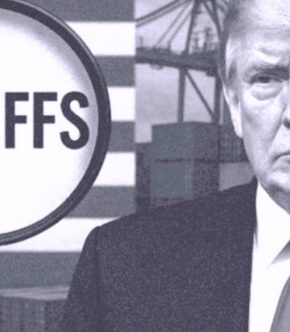President Donald Trump has once again thrown Washington into a frenzy with a bold idea that few saw coming. In a Truth Social post on November 10, Trump proposed sending $2,000 “dividend” checks to Americans – money that he says will come directly from the massive tariff revenues his administration has collected from foreign countries.
“America’s money returned to the American people – not borrowed, not printed, and not taxed,” Trump wrote. “All money left over from the $2000 payments made to low and middle income USA Citizens, from the massive Tariff Income pouring into our Country from foreign countries, which will be substantial, will be used to substantially pay down national debt.”
The announcement linked two of Trump’s favorite themes: economic populism and fiscal responsibility. He framed tariffs as both a shield for American workers and a source of national wealth. “People that are against Tariffs are fools,” he declared in another post. “We are now the richest, most respected country in the world, with almost no inflation and a record stock market. 401(k)s are highest ever. We are taking in trillions of dollars and will soon begin paying down our enormous debt.”
Trump’s message was clear: after years of trade imbalances and foreign manipulation, he wants Americans themselves to reap the rewards of his “America First” trade policy.
How Much Tariff Revenue Has Been Collected
Since Trump reinstated broad tariffs in early 2025, the federal government has pulled in unprecedented sums from import duties. The Treasury Department reported roughly $195 billion in tariff revenue through September — an increase of 250 percent from 2024. Independent estimates, such as those from the Yale Budget Lab and the Peterson Institute for International Economics, place total receipts between $300 billion and $309 billion by year’s end if current trends continue.
Trump’s allies argue that these figures prove tariffs are working. They say the money flowing in from other countries demonstrates that America is finally enforcing fair trade rules. The president himself claims this revenue will continue to rise. “Businesses are pouring into the USA only because of tariffs,” he said. “Record investment in the USA, plants and factories going up all over the place.”
Still, even optimistic projections show that paying every American adult $2,000 would require hundreds of billions of dollars. There are about 150 to 250 million adults in the U.S., meaning total costs could range from $300 billion to over $500 billion. Including children could push that figure past $700 billion.
Economist Erica York from the Tax Foundation noted that if every adult earning under $100,000 received the dividend, the payout would nearly consume all current tariff revenues. Yet she acknowledged that the idea aligns with Trump’s populist approach, saying that it “links trade enforcement directly to tangible household benefits.”
A Promise to Pay Americans and Reduce the Debt
Trump’s Truth Social messages did not stop at the idea of a rebate. He went further, pledging to use any remaining tariff revenue to reduce the national debt, now hovering around $37 trillion. “We will soon begin paying down our enormous debt,” he wrote. “Record investment in the USA, plants and factories going up all over the place.”
Treasury Secretary Scott Bessent reinforced the debt-reduction message, saying the administration is “laser-focused on paying down the debt.” He added that the revenue could also fund other forms of relief for working Americans, such as eliminating taxes on tips, overtime, or Social Security. “The dividend could come in lots of forms, in lots of ways,” Bessent explained.
To Trump’s supporters, this dual promise – returning money to citizens while cutting debt – exemplifies his long-stated belief that prosperity should come from productive trade, not government borrowing.
Legal and Political Challenges Ahead
Despite Trump’s confidence, there are hurdles. The Supreme Court is currently reviewing whether Trump’s tariffs are constitutional under the International Emergency Economic Powers Act, a 1977 law that limits presidential authority in trade emergencies. Every lower court so far has ruled against Trump but allowed the tariffs to remain while the case moves forward.
In defense of his position, Trump posted, “The President of the United States is allowed (and fully approved by Congress!) to stop all trade with a foreign country, which is far more onerous than a tariff, but is not allowed to put a simple tariff on a foreign country, even for purposes of national security? That is not what our great Founders had in mind.”
If the Supreme Court rules against him, future tariff revenues could be severely limited, potentially stalling the proposed dividend payments. Even if upheld, the distribution of checks would require congressional approval or new legislation. Senator Josh Hawley, one of Trump’s allies, introduced the American Worker Rebate Act earlier this year, which proposed $600 tariff rebate checks for adults and children, but the bill has not advanced out of committee.
Supporters See Fairness and Patriotism
Among Trump’s base, the idea of a tariff-funded dividend has struck a patriotic chord. Retirees and blue-collar workers say it’s only fair for Americans to benefit from the money that foreign governments are now paying. Many social media comments echoed the same sentiment: “It’s our money, not China’s.”
Some supporters see the proposal as a long-overdue recognition of how global trade has shortchanged ordinary Americans. “We have watched our jobs leave and our factories close for decades,” said one voter interviewed by Newsmax. “If tariffs are bringing those jobs and dollars back, then every citizen should see the benefit.”
Economist Tomas Philipson, a former White House adviser, offered a practical calculation: “If you pay $2,000 to 100 million Americans, you end up at $200 billion. If you include 200 million Americans, we are up to $400 billion.” He acknowledged the cost is significant but added that “it demonstrates how substantial the tariff program has become.”
Skeptics See Political Theater and Economic Risk
Not everyone is convinced. Critics from The Wall Street Journal’s editorial board called the proposal a “Hail Mary pass,” arguing that it’s a political move to soften the impact of higher consumer prices caused by tariffs. They pointed out that Goldman Sachs analysis shows American consumers shoulder roughly 55 percent of tariff costs through price increases.
Columbia Business School economist Brett House dismissed the idea as unlikely to become policy anytime soon. “I don’t think consumers should expect to see these rebate checks,” he said, adding that the administration still needs Congress’s approval for any direct payments.
Financial analyst Stephen Kates warned of potential inflationary effects similar to those seen after pandemic stimulus checks. “Money is money,” he said. “When more money comes into the economy to chase the same amount of goods and services, it’s going to be inflationary.”
Still, others note that inflation remains relatively stable near 3 percent, suggesting that modest, targeted payments may not trigger runaway prices.
Trump’s $2,000 tariff dividend plan may not yet be a concrete policy, but it reflects his signature approach: turn complex economic debates into direct benefits for working Americans. Whether or not the checks ever arrive, the idea itself has already reframed the conversation around trade, debt, and fairness.
Trump’s supporters view the proposal as a way of reclaiming wealth that once flowed overseas. His critics call it political theater. But even skeptics admit it captures something uniquely American — the belief that prosperity earned abroad should serve the people at home.
As Trump himself wrote, “America’s money belongs to the American people.” Whether the courts, Congress, and the numbers will cooperate remains to be seen, but for now, the notion of a tariff dividend has given millions of Americans something new to consider: a government that funds itself not through taxes, but through toughness.











